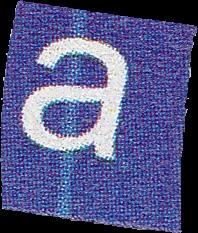









The Wende Museum
A Virtual Family Day Activity
WENDE MUSEUM OF THE COLD WA R
presents
Time Capsule Hoffmans, 1961
The mission of the Wende Museum is to preserve the past in order to inform the present. We are particularly interested in personal stories behind historical moments


and how people make sense of them.
During times of transition and change, it can be common to feel overwhelmed. Faced with added challenges, we may be so concerned with what is coming next that we lose sight of what we are feeling in the present.
How will your story of the “now” be recorded, preserved, and shared?







In this activity, you will be presented with three different ways in which to reflect on and take record of your own life. By making a physical record of your feelings and surroundings, you will forever have an accurate insight into what your life was like during this historical moment in time.






















Why write in a diary?
Keeping a personal diary is a simple and effective way to document your daily life. When you speak to the pages with detail, honesty, and emotion, it will make an accurate record of what life was like for you in the past.
How do I get started?
A diary is usually contained within a blank journal or notebook. If not available, you may also use blank paper.










What do I write about?
Before writing, it is important to mark each entry with that day’s date. That way, you will be able to look back and know exactly when your entry was written. Typically, a time is scheduled daily in the evening to reflect on the events of the past. Try to consistently write an entry daily, even if it’s short.

There are no rules to writing in a






diary!
You may, for instance, choose to write about everything you did in the day past (for example, “I went to the park today” or “Mom cooked my favorite meal for dinner”). Even seemlingly ordinary details are worth including because they will grow in significance over time. In this time of change, take time to write about what is most significant in your life at this moment. How does your life change day-to-day? How has it changed over the past year?
Outside of writing, you can also decorate your diary with stickers, doodles, paper cutouts, or drawings of your family and friends.

Option #1:
Wende Connection: Polish Scrapbook
Girlhoodobsessionhistoricalorimportantartifact?
















The document pictured above was created by a young Polish girl in the 1960’s . In it’s pages, she collected articles and images of her favorite actors and actresses. Though it may not have been seen as an important document back then, it now provides us with insight about pop culture in 1960’s Poland.






Why create a family scrapbook?
Everyone has a story to tell, and no two tales are the same.
By making a open book that each of your family members can contribute to, a shared record of your household will be preserved for future generations.
How do I get started?
Your family scrapbook can be contained within a blank journal or notebook. It is important to use sturdy materials to ensure that the scrapbook will stay intact through the years.

Since everyone in your family will be adding to the scrapbook, be sure to keep it in an easily accessible area.





What goes in the scrapbook?




Scrapbooks are typically made to share stories and experiences with others. They can contain photos and found objects, in addition to writing and drawings.









What do you want to share with others about your life? How do you want this moment in time to be remembered?

Try this!
Write a message to someone in your family to start a conversation in the scrapbook.

Option #2:
Wende Connection: Brigade Books


In an effort to encourage workers to develop skills as artists and writers, East German workplaces would maintain collaborative scrapbooks called brigade books.



A typical brigade book included a combination of photos, drawings, and longform writing. The subject matter ranged from celebration of State achievements to everyday celebrations such as holiday, vacaction, and travel.



Option #3:









Why send a postcard?
In this time of social distancing, it can be difficult to connect with others, especially with those who live far away. Postcards are a great way to share stories and experiences with loved ones.
How do I get started?
First, decide who you want to send your postcard to.
Next, you may either print out the postcard template (last page) or cut a piece of thin cardboard (for example, a cereal box) into a 4” x 6” square.



*Note: If you plan on mailing your postcard via USPS , please use cardstock or thin cardboard. And don’t forget to put your stamp in the top-right corner!


What do I write on my postcard?

Postcards are fully customizable! Typically, the front of a post card will contain either a printed image or drawing.


On the back, there is space to write a short message to your recipient.












Wende Connection: Soviet Postcards




















Postcards were commonly shared throughout Eastern Europe as a way to communicate with distant friends and family. The front image of postcards may show where one has traveled (for example, Hotel Dobrudsha in Bulgaria in the top-right) or an event one has attended (The Peace Bicycle Race in the bottom-right).

 Hotel Dobrudsha, Bulgaria (1986)
Goldstrand Zlatni Piassatzi Hotel, Bulwgaria (1985)
Peace Bicycle Race, East Germany (1952)
Russian Ballet Youth Festival (1956)
Hotel Dobrudsha, Bulgaria (1986)
Goldstrand Zlatni Piassatzi Hotel, Bulwgaria (1985)
Peace Bicycle Race, East Germany (1952)
Russian Ballet Youth Festival (1956)




Place stamp here Place stamp here










































































































 Hotel Dobrudsha, Bulgaria (1986)
Goldstrand Zlatni Piassatzi Hotel, Bulwgaria (1985)
Peace Bicycle Race, East Germany (1952)
Russian Ballet Youth Festival (1956)
Hotel Dobrudsha, Bulgaria (1986)
Goldstrand Zlatni Piassatzi Hotel, Bulwgaria (1985)
Peace Bicycle Race, East Germany (1952)
Russian Ballet Youth Festival (1956)


